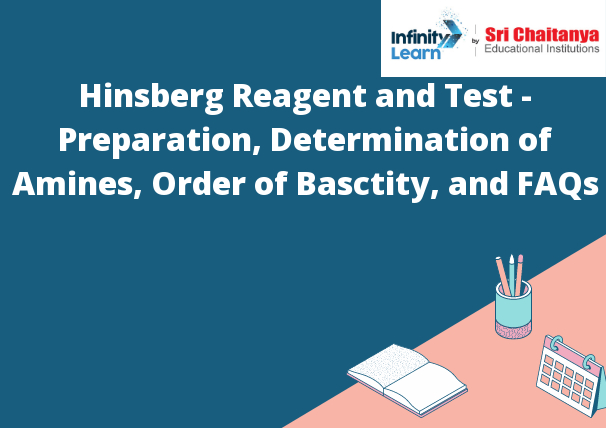Table of Contents
What is Hinsberg Reagent?
A Hinsberg reagent is a solution of sodium hydroxide in ethanol used to test for the presence of aryl aldehydes and ketones. The aryl group in these molecules is converted to an aryl anion, then detected using a spectrophotometer.

Preparation of Hinsberg Reagent
Hinsberg reagent is a sulfur-based reagent used to identify aldehydes and ketones in a sample. The reagent is prepared by dissolving sodium nitroprusside in water and adding sodium hydroxide until the solution is slightly alkaline. The reagent is then added to the sample, and the presence of aldehydes or ketones will cause a purple color to develop.
Hinsberg Test
The Hinsberg Test is used to determine the presence of aldehydes and ketones in a sample. A sample is mixed with a reagent that contains a silver salt. If aldehydes or ketones are present in the sample, they will react with the silver salt to form insoluble silver compounds. The presence of these insoluble silver compounds can be detected and quantified using spectrophotometry.
Hinsberg Reaction Pathways
The Hinsberg reaction is a chemical reaction used in organic chemistry to test for the presence of aldehydes and ketones. The reaction involves the addition of a reagent, ortho-nitrophenylhydrazine (ONPH), to aldehydes and ketones, followed by the addition of sodium hydroxide. The presence of a precipitate indicates the presence of the aldehyde or ketone. The Hinsberg reaction can distinguish aldehydes from ketones, as aldehydes will form a precipitate with ONPH, but ketones will not.
Determination of Amines Using Hinsberg’s Test
A 20% sodium hydroxide solution was added to a sample of the amine. The solution was then heated on a hot plate—a purple color developed in the solution.
A purple color indicates the presence of an amine.
Order of Basctity of Amines
- Primary amines
- Secondary amines
- Tertiary amines
Differentiate Methylamine and Trimethylamine
The major difference between methylamine and trimethylamine is that methylamine is a primary amine, whereas trimethylamine is a tertiary amine. Methylamine is a smaller, more polar molecule than trimethylamine. Methylamine is also less volatile and less soluble in water than trimethylamine.
Preparation of Para-Nitroaniline from Benzene
Benzene (1.00 mol) was added to a flask equipped with a reflux condenser. Para-nitroaniline (1.00 mol) was added to a separate flask. The two flasks were then connected using a T-shaped glass tube. The reaction mixture was heated to reflux and allowed to stir for 1 hour. The reaction mixture was then cooled to room temperature and poured into a separatory funnel. The organic layer was separated and washed with water (3 times). The organic layer was then dried over anhydrous magnesium sulfate and filtered. The solvent was then removed under reduced pressure to give para-nitroaniline.









